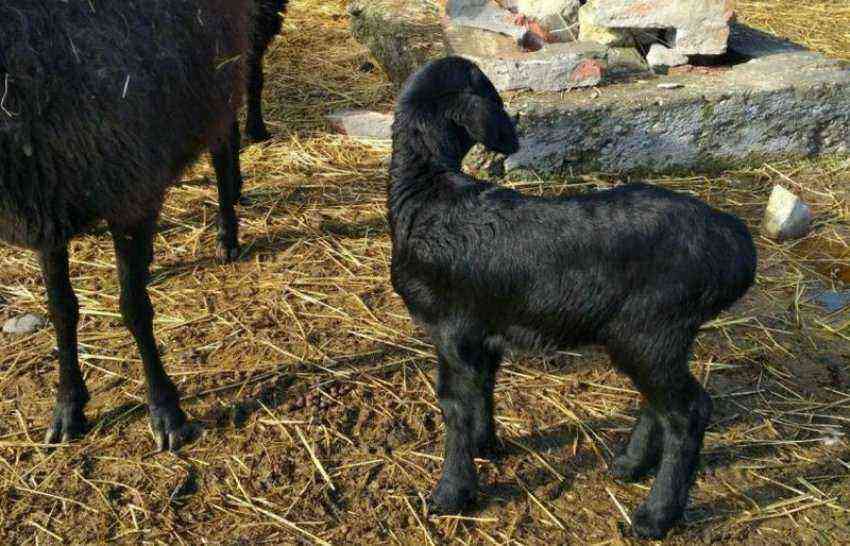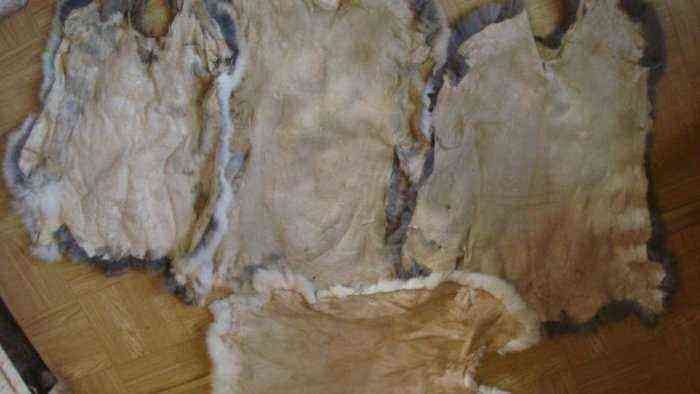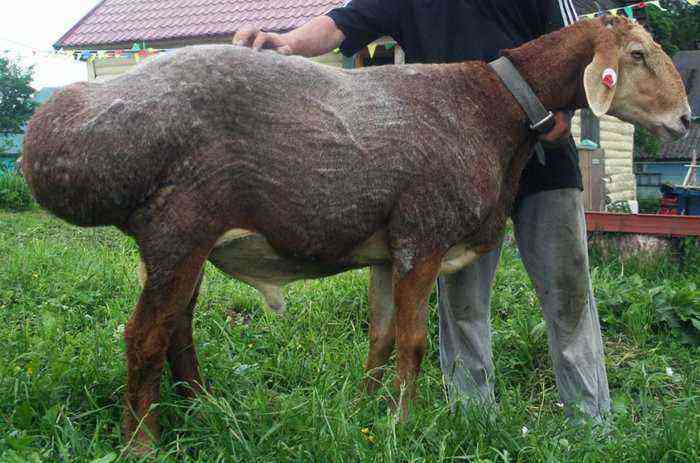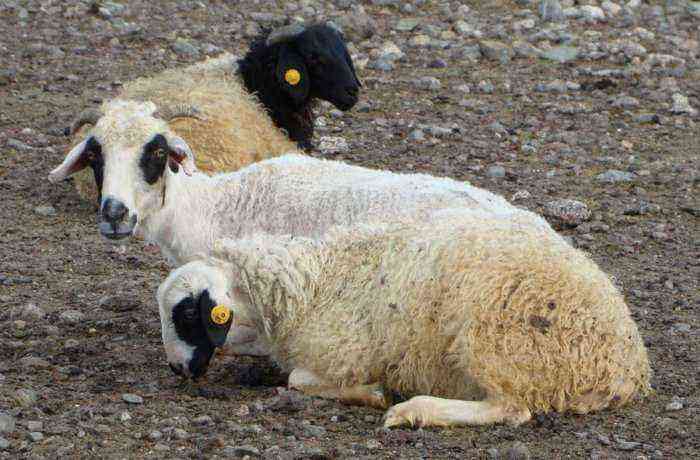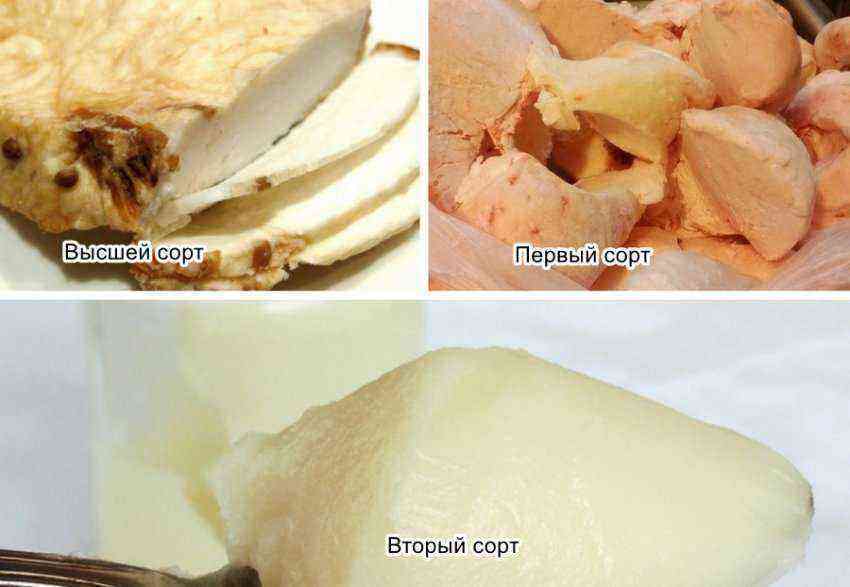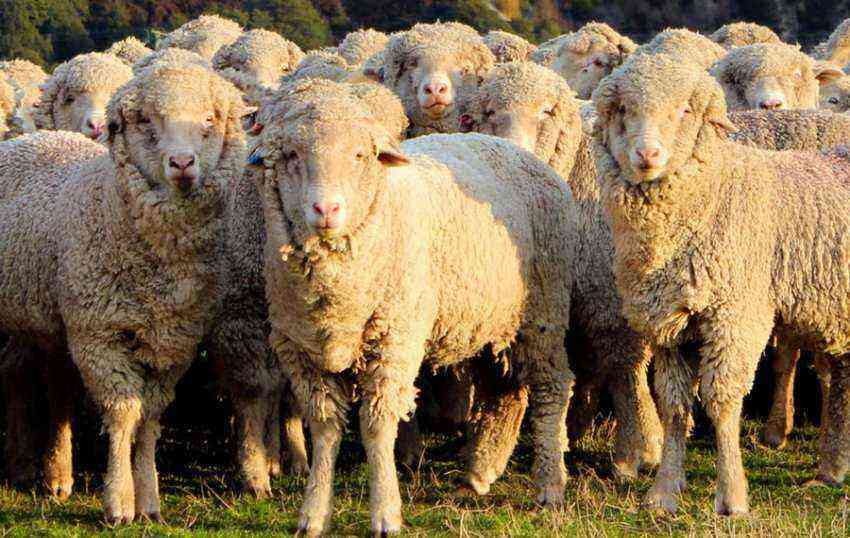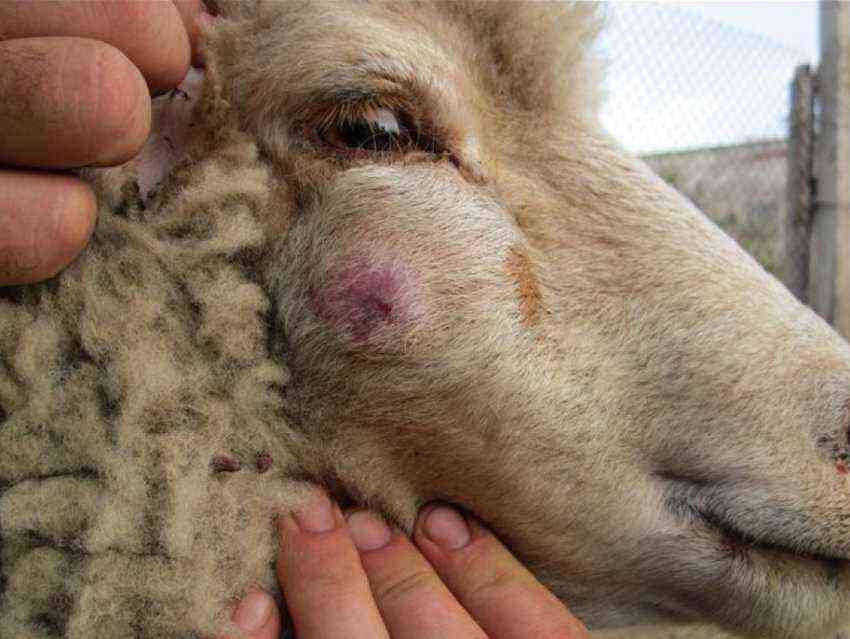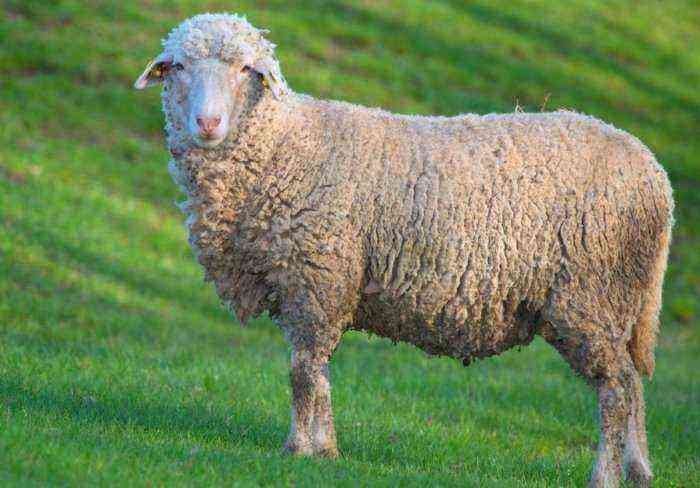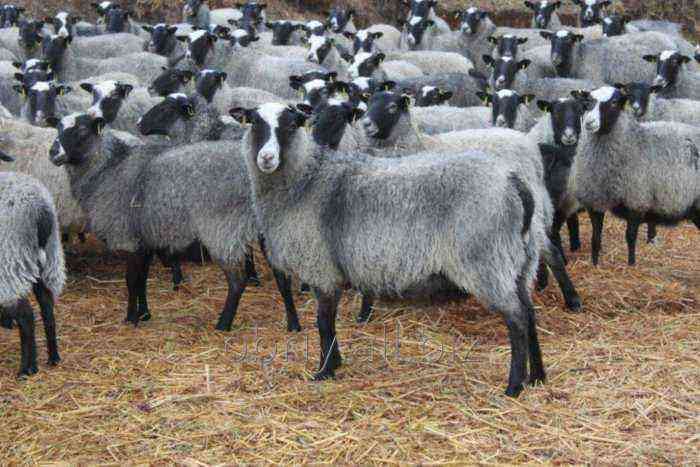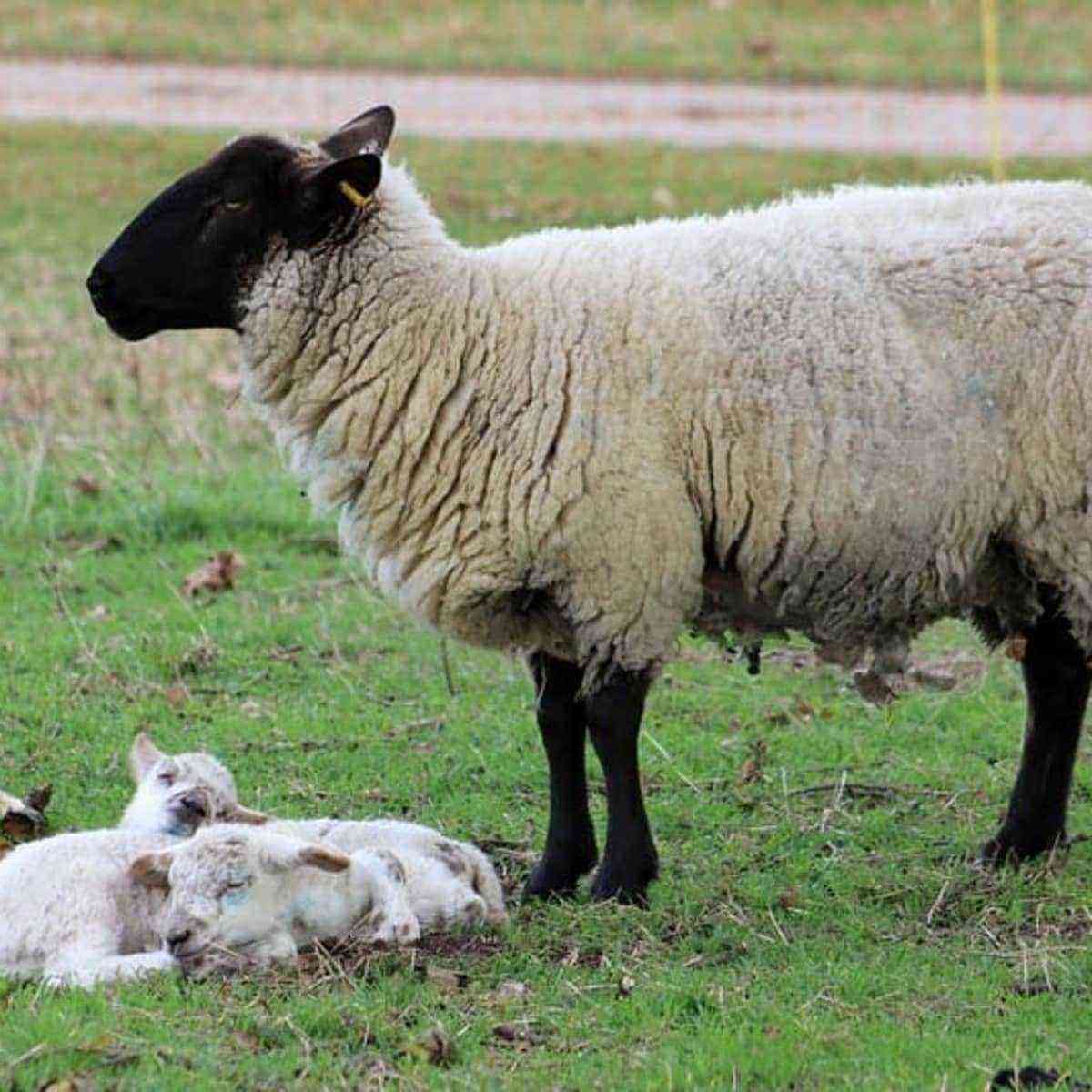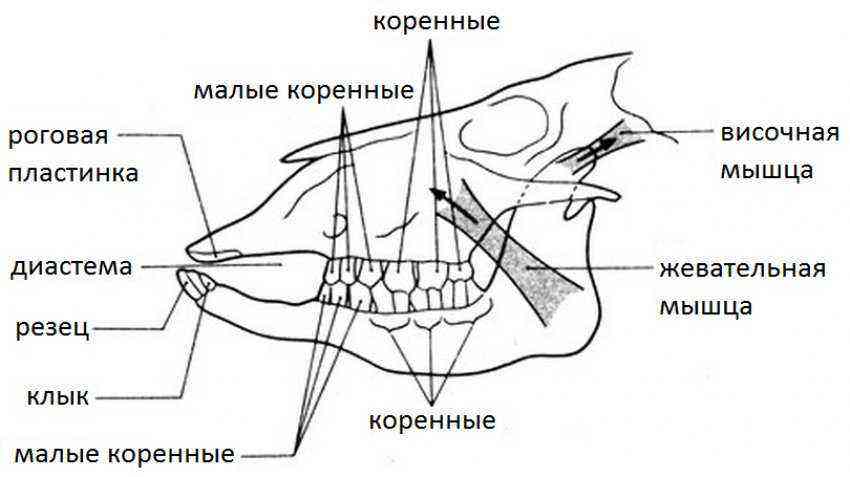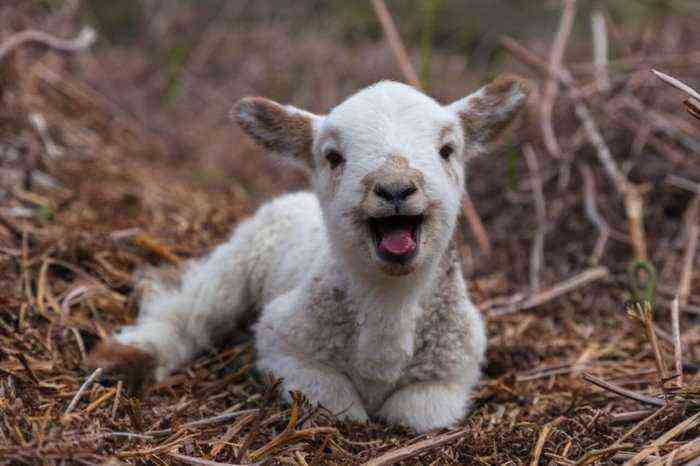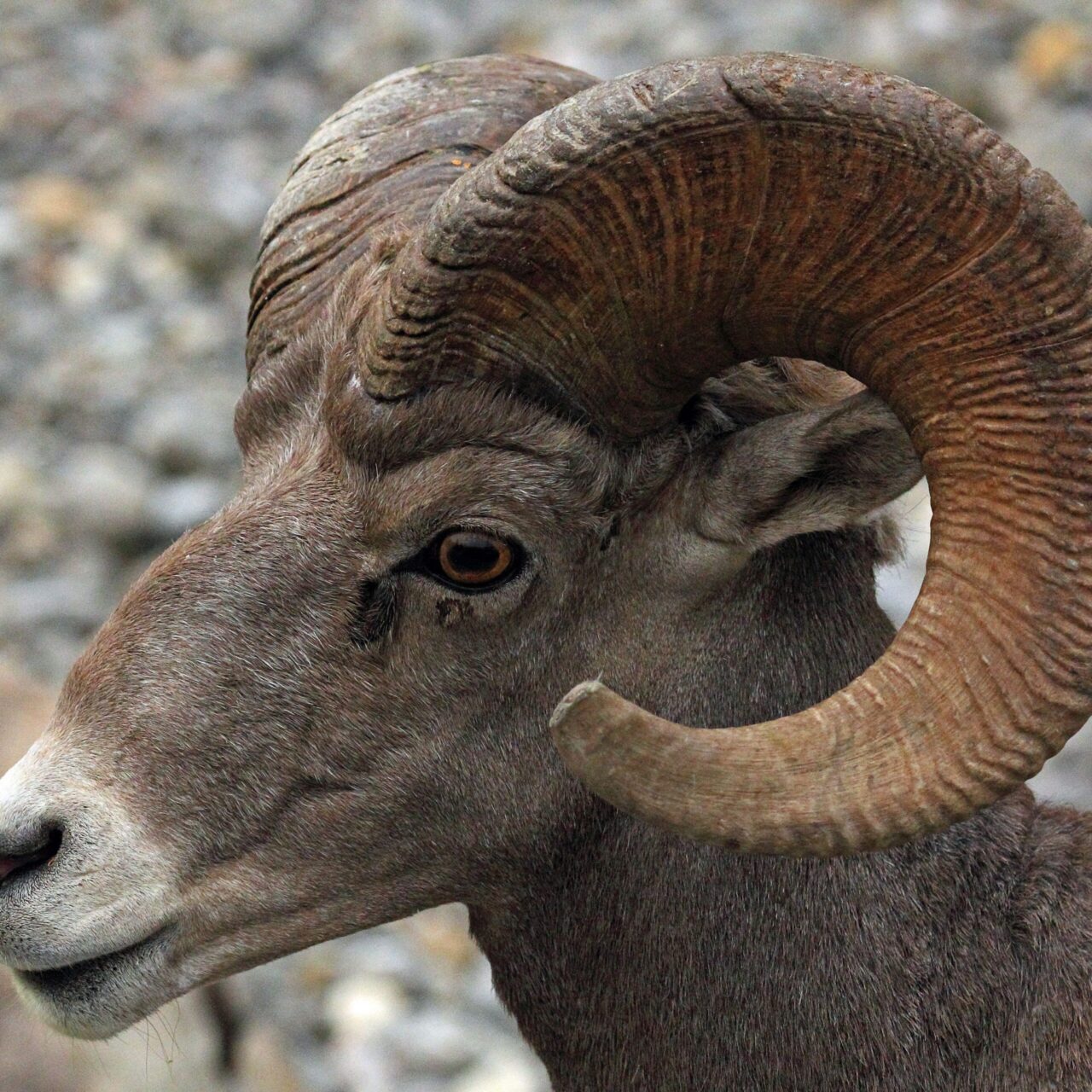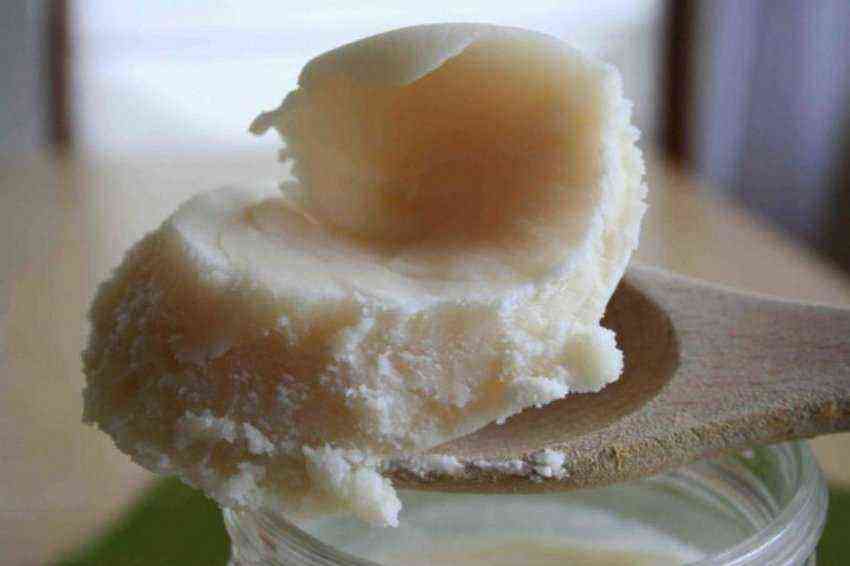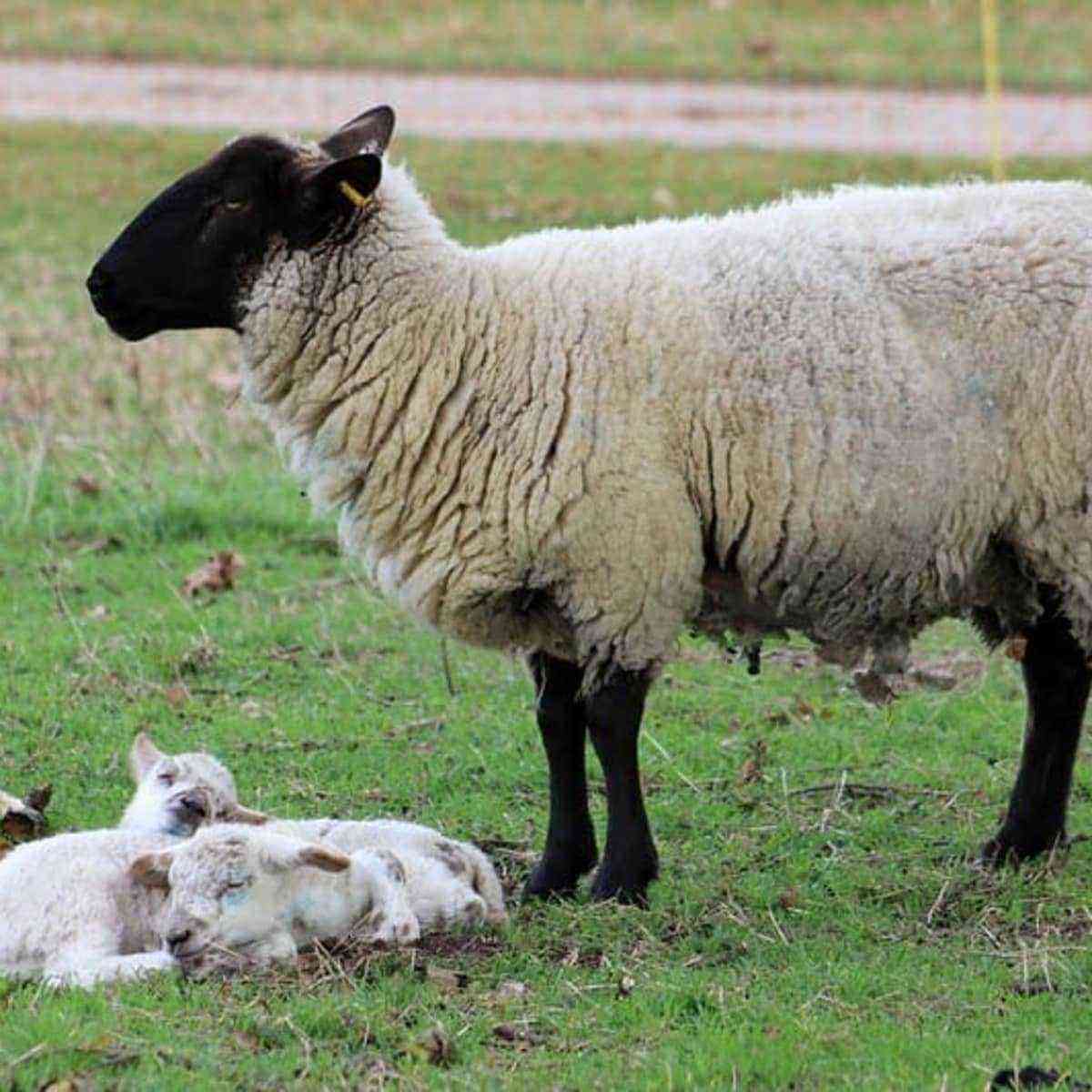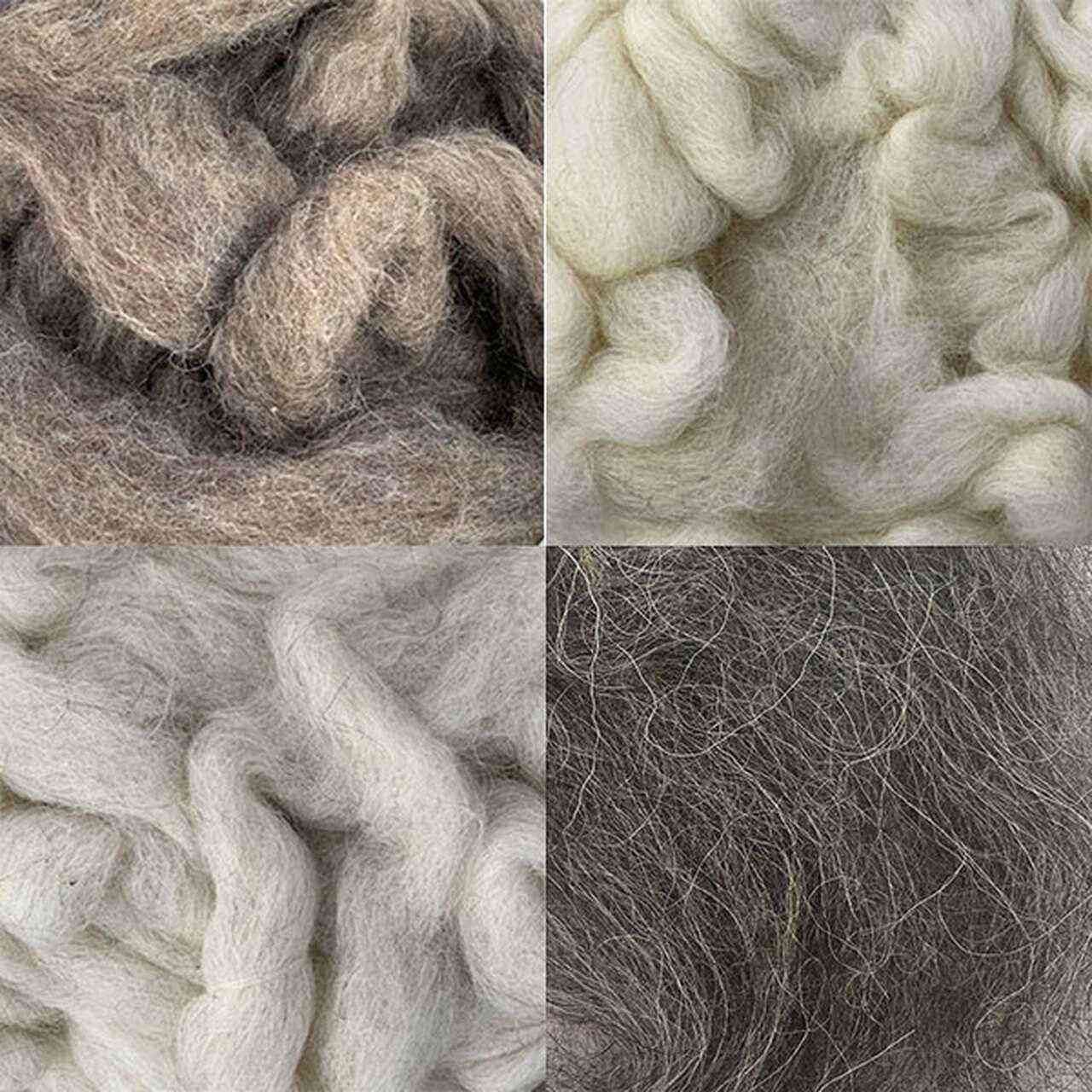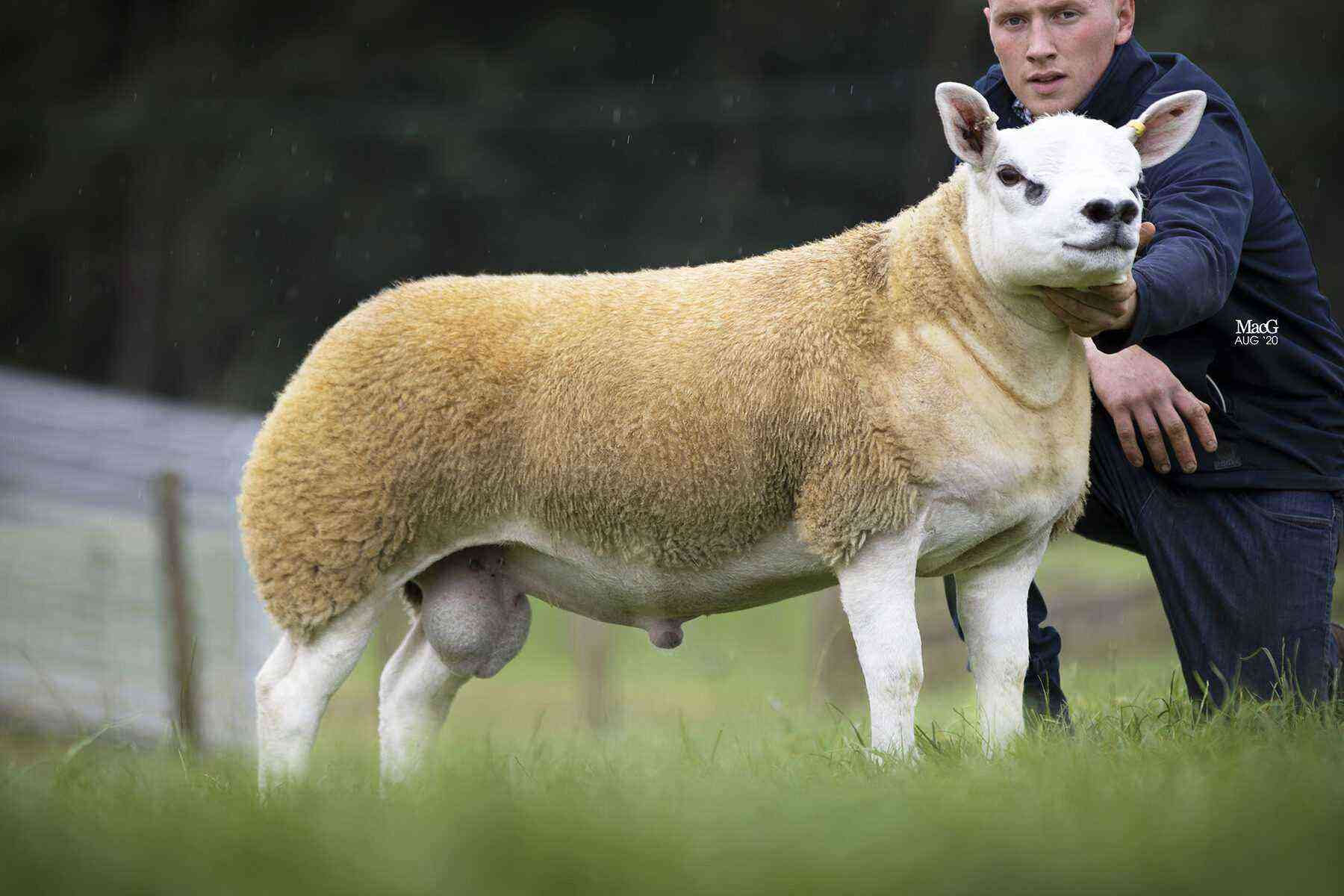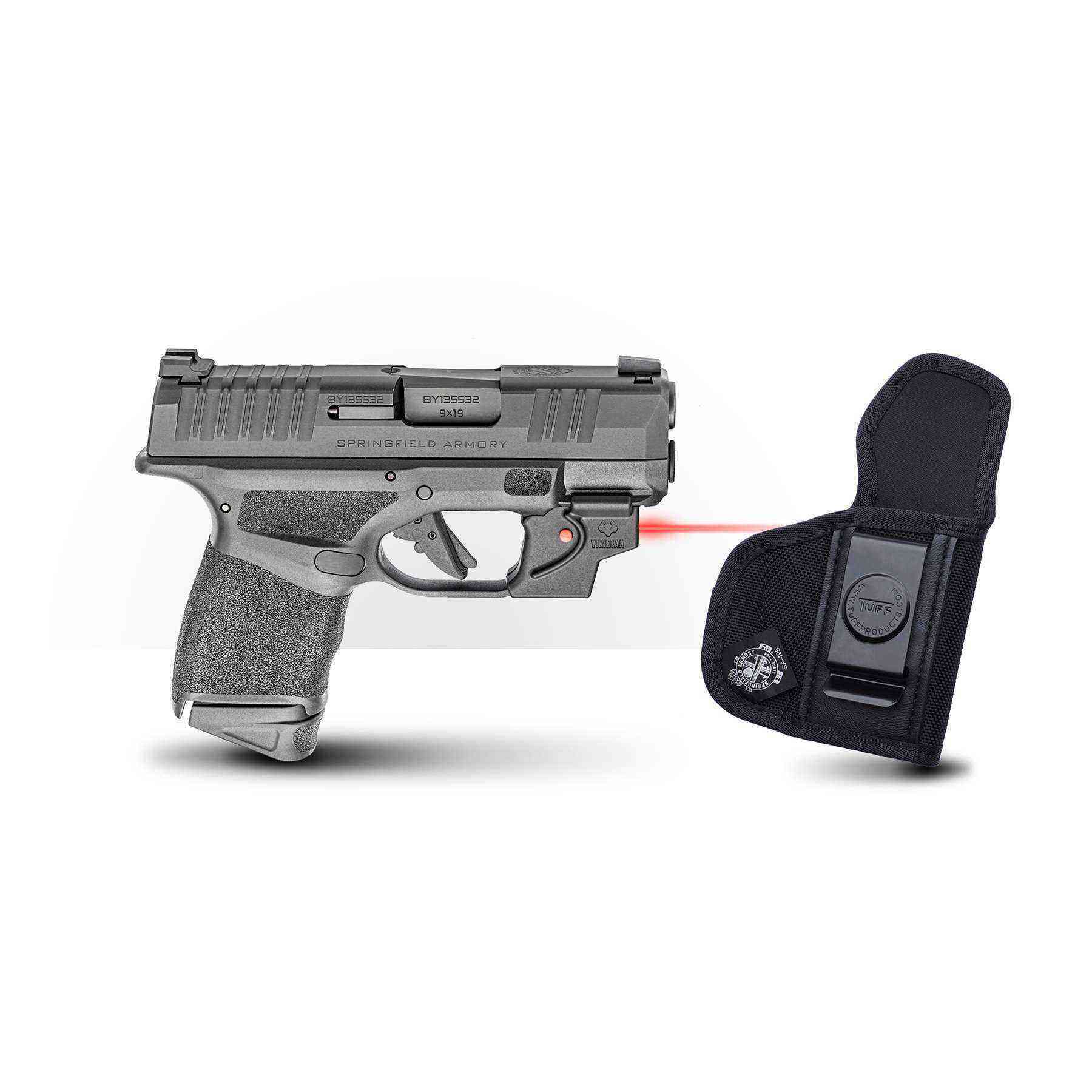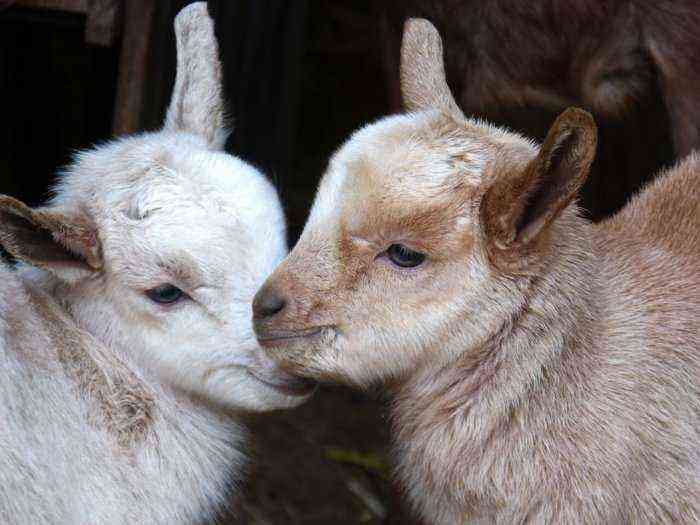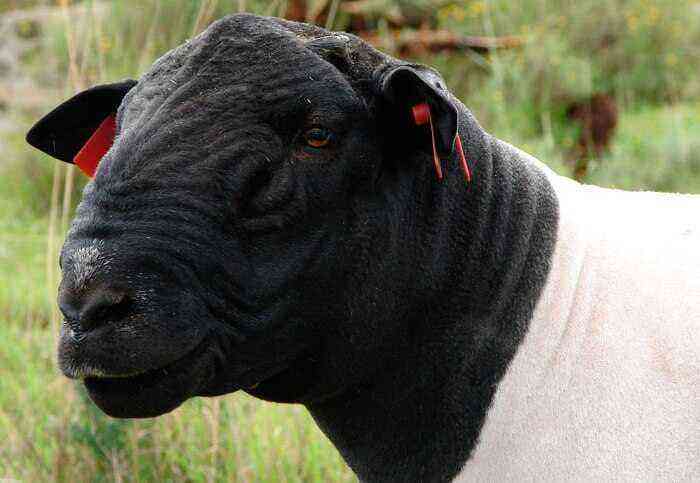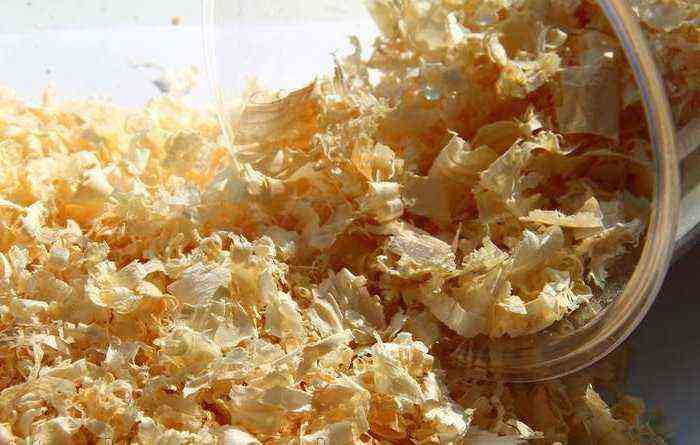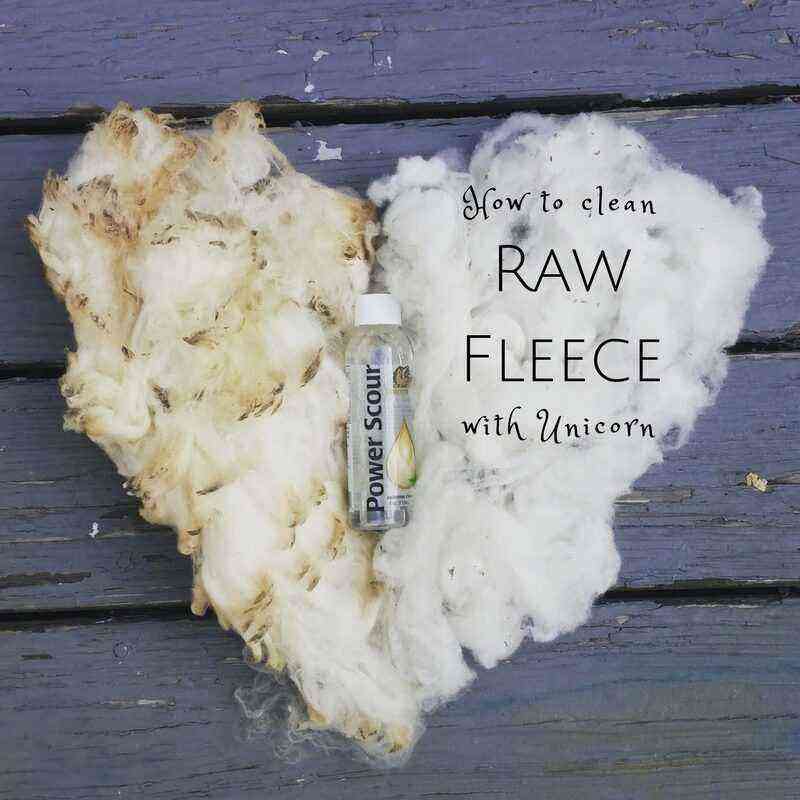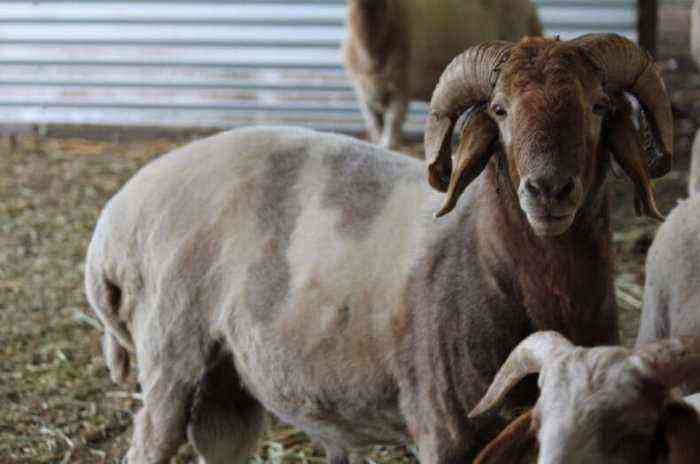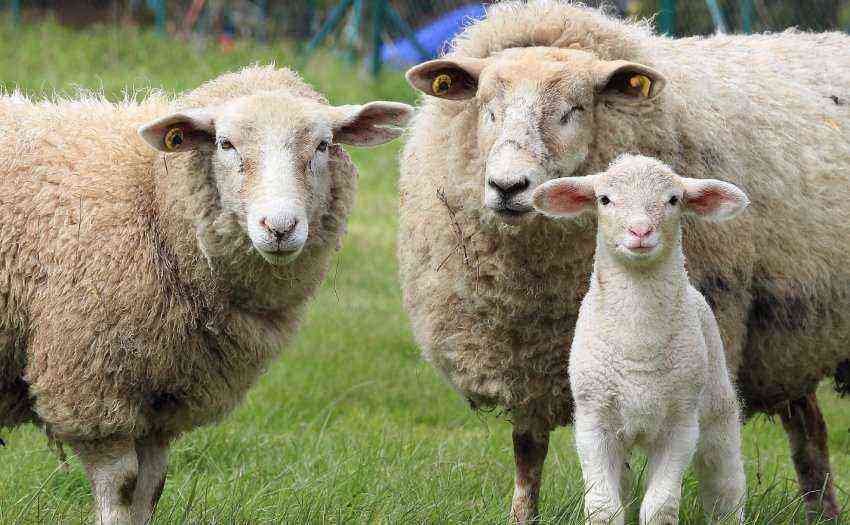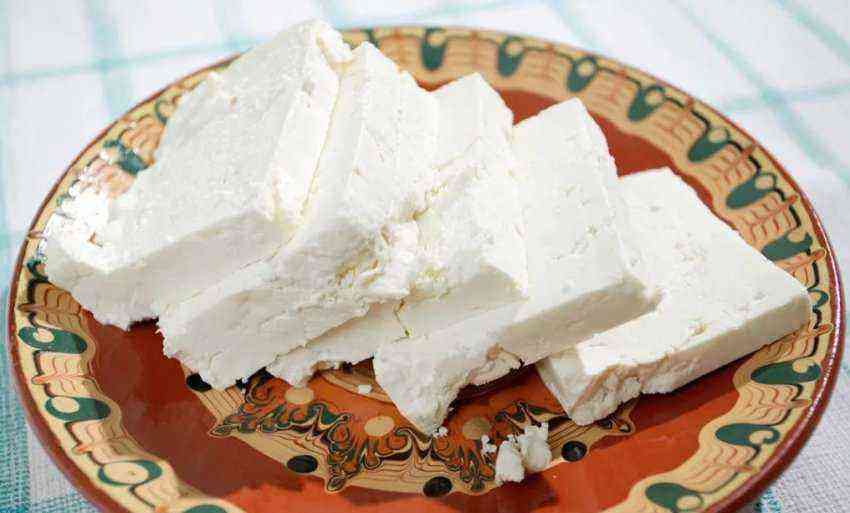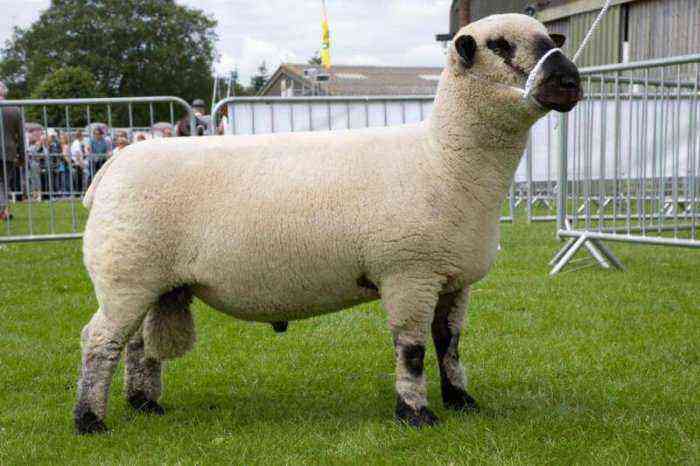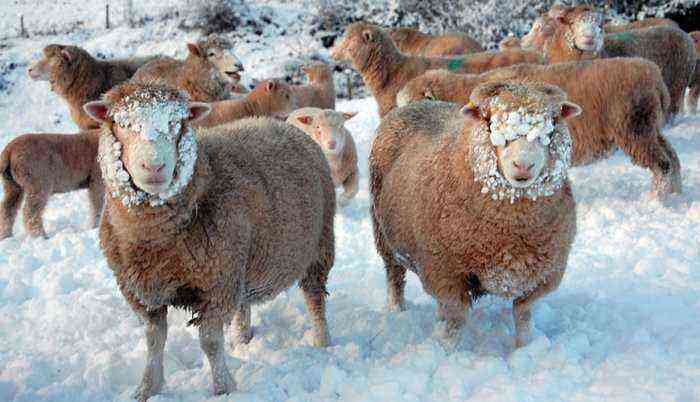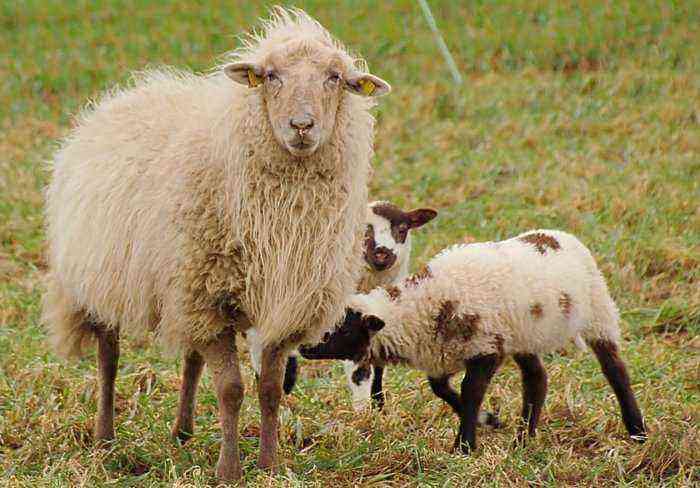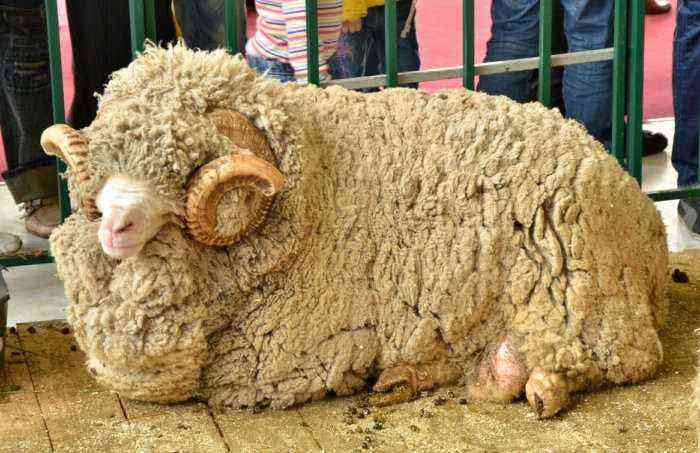Despite the unpretentious body and warm fur, domestic sheep and ram can be called one of the most demanding ungulates in terms of comfort. That is why on each farm, when breeding them, a warm and closed room from atmospheric precipitation must be equipped. The article provides detailed instructions for the construction of a reliable sheep pen, as well as describes all the details of its construction and device.
Features and benefits of keeping sheep in a paddock
Modern sheep breeding technology involves the use of several specific solutions at once. Animals can be kept freely, in special enclosures or exclusively in closed conditions. But, despite all sorts of differences, their main common feature can be called a corral, which becomes the center for keeping animals.
This combination allows you to create several types of sheep care systems on the farm at once:
- stall – sheep and rams are kept all year round in a closed area with an equipped walking yard;
- stall-pasture – animals are kept in a paddock in winter, and in summer they are released on artificial or natural pastures;
- pasture-stall – all year round, animals are kept in an open area, and only sick individuals or a woman in labor with a lamb are moved to a covered corral.
Important! The type of corral for rams and sheep is chosen according to the climatic and natural conditions of the growing region. Stable is the best option for cold zones with poor fodder reserves, pasture-stall can be called the best option for areas with a mild climate and short winters, stall-pasture is best suited for agricultural regions with a moderately cold climate.
- Thanks to a good corral, even in a mini-farm, you can achieve:
- improving the general microclimate among animals;
- protection of sheep and rams from all kinds of infections and predatory species of animals;
- healthy mode of maintenance;
- increased yield of meat and dairy products and wool;
- reducing the overall cost of keeping animals.
What is the design requirements
It is a building insulated and covered barn, within the walls of which animals spend the night and take shelter from adverse weather conditions, as well as nearby infrastructure. At its core, a corral is a complex of various structures that provide animals with the correct mode of life.
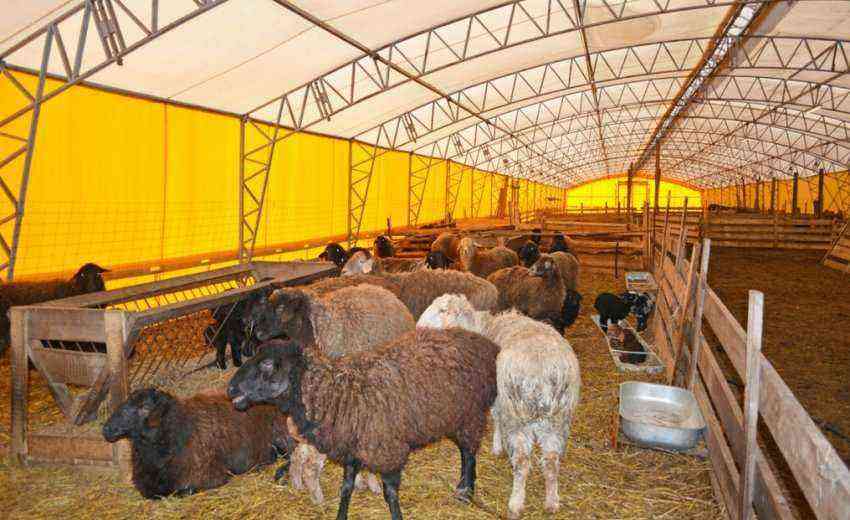
This is achieved by distributing the habitat of the sheep to a stall, a place for pasture, as well as a territory for eating and drinking, with or without a canopy. This allows you to give each artiodactyl the necessary space for walking, as well as regular feeding.
That is why quite serious requirements and conditions are put forward for such a structure:
- in the walls of the barn, the daily air temperature should not drop below +12 ° C, cold in the building is unacceptable;
- sheep should be exposed to moderate humidity, so the walls of the barn are made only from vapor-tight materials or the design provides for an air ventilation system;
- regardless of the season, it should always be light in the sheepfold;
- each adult animal should be provided with free space to the maximum;
- for construction, only warm material is chosen, with a low coefficient of thermal conductivity;
- if more than one breed is grown on the farm, the entire area of uXNUMXbuXNUMXbthe sheepfold should be divided into several compartments for each of them.
Video: Shepherd’s device
DIY construction process
Any building on the site is a complex structure, which provides for the solution of several technical solutions at once, so the construction process often involves several successive stages, including preparing the site and materials for the future building, and only then erecting the frame elements of the building.
Site selection, area calculation, drawings
To build a sheepfold correctly, the construction of the structure should begin with careful preparatory work. First of all, you need to choose for this a good site that meets all the technical requirements for the construction of capital buildings. 
In addition, such a place must necessarily be convenient for walking, otherwise the livestock will get sick, and its productivity will decrease significantly.
The ideal place for this should be on a small hill or plain, with dense and moderately moist soil. The general territory of the complex should be located in open areas, away from tall vegetation and other buildings.
Important! In order to provide livestock with better conditions, it is recommended to increase the minimum pen size by at least 1,5–2 times. This is
will help to avoid shortage of space in the event of a sharp increase in the birth rate in the herd.
Animals should receive maximum light and fresh air, only in such conditions they will develop normally and produce high-quality products. It is best if the selected area is near a small source of water, which will serve as an ideal place for taking drinking moisture.
- It is highly not recommended to build sheepfolds and keep artiodactyls on:
- wetlands;
- clayey or excessively viscous soils;
- areas with rock;
- excessively hilly terrain or lowlands;
- sites near highways or industrial enterprises;
- territories adjacent to the cattle cemetery.
Before arranging the future economy, you also need to create a detailed project, or at least a schematic drawing. During this period, it is also necessary to carry out a detailed calculation of the space required for the paddock.
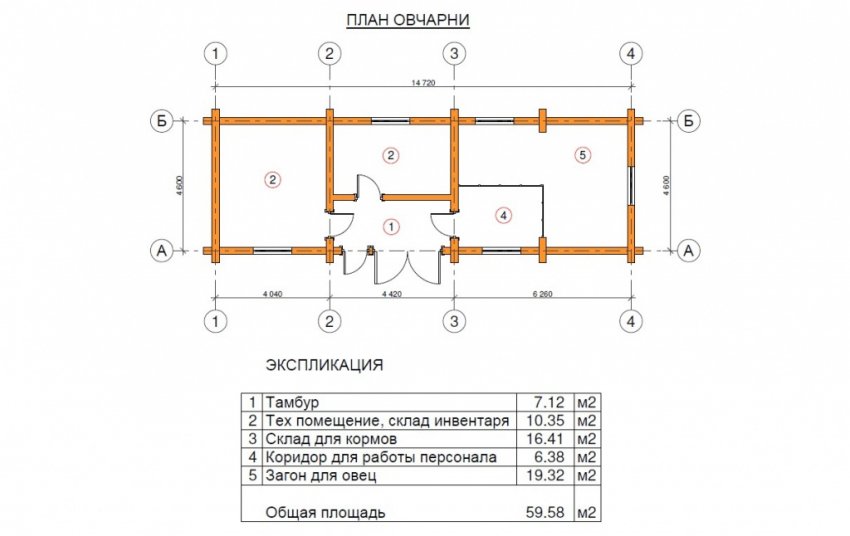
According to existing veterinary standards, when growing a flock for sheep and lambs, at least 1 m² of space per 1 individual is required, for sheep this figure increases to 1,7 m². By counting the number of individuals in the future farm and multiplying the numbers by these indicators, you can exactly get the minimum area size.
It is strictly necessary to approach the height of the building: it must be at least 2 m, while it must provide normal human access to care for animals.
When arranging, you should also decide on the height of the protective fence, it should be in the range of 1,2–1,5 m, but if there is a herd of more than 30–50 heads, it is better to increase the height to 2 m. Without this, under the influence of the herd instinct, the cattle trying to jump over the fence.
Video: Sheep Summer Camp
Tools and materials
For the correct construction of the sheepfold, you will need the following set of tools:
From the materials you will need:
drill or screwdriver cement grade not less than M400 electric jigsaw river sand, cleaned planer crushed stone construction hand saw rail mounting chisel construction board, polished tape measure wooden beam 50 × 100 mm wooden pegs and marking rope wooden beam 100 × 100 mm hammer OSB 3 plate ax timber from wood, brick or cinder block (for building walls) bayonet and shovel shovel siding, lining or any other material for sheathing pliers roofing material to choose from (slate, roofing material, metal tiles, etc.) rope fasteners (nails, self-tapping screws, etc. ) a set of screwdrivers of different sizes
Clearing the area, preparatory work
After you have chosen the ideal place for the paddock, you must carefully prepare the area for the construction of an agricultural structure. First of all, the site should be cleared of any vegetation, and especially of shrubs and young trees.
To do this, the entire aboveground mass should be mowed with a walk-behind tractor, trimmer or hand scythe. At the same time, if possible, the surface of the soil should be cleaned of any contaminants, including stones.
Did you know? Domestic sheep are considered one of the oldest animals used by man for economic purposes. They were domesticated 8 thousand years ago in the territory of Ancient Syria, Turkey and Mesopotamia.
The next stage of preparatory work can be called leveling the site. At this stage, you need to manually or with the help of various technical means to level the soil to one mark.
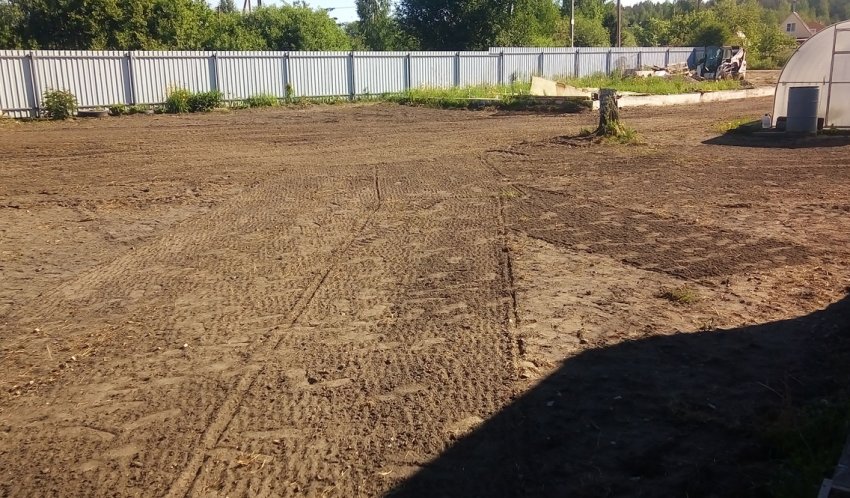
In the event of the appearance of excess soil, it is recommended to disperse it evenly over the territory of the future paddock. Thus, this will help create a slight rise, which will best protect the site from spring floods.
Layout
The first technically difficult step in building a paddock can be called the marking of the territory. During the process, with the help of wooden pegs and a marking rope, a schematic arrangement of the main building, as well as additional ones is created on the site: a walking yard, a canopy, etc.
At the same time, it is necessary to mark the location of the foundation, including its required thickness. After all the manipulations along the boundaries of the territory, high pegs should be installed, in place of which a protective fence should be installed in the future.
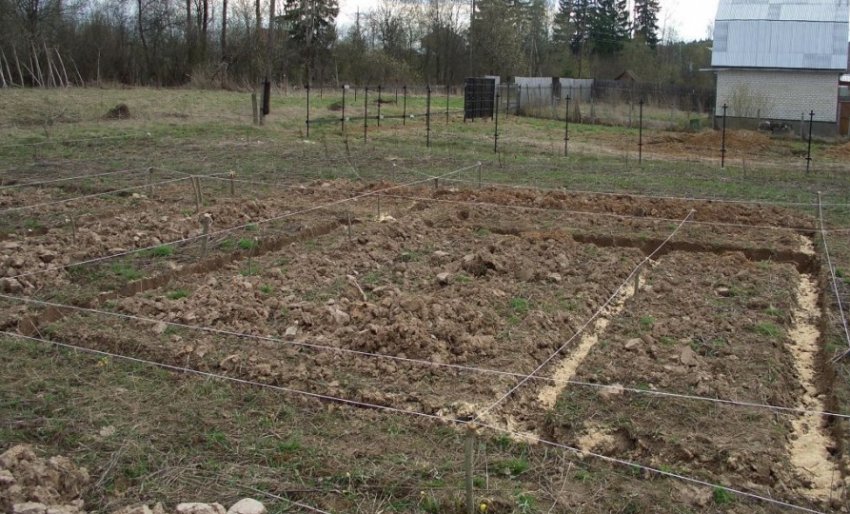
Foundation
Formwork is installed on the previously marked pegs. To do this, small vertical supports are created from the mounting rail, which are tied around the perimeter with boards, so a complete structure about 30 cm high should be obtained.

Along the entire length of the formwork in the ground, they dig a recess in the soil of at least 60 cm. After that, the recess, up to the upper border of the formwork, must be filled with concrete mortar. Next, you should wait at least 1 week for the liquid mixture to solidify, after which the formwork can be removed and the construction process continued.
frame
From above, the concrete foundation should be covered with insulation, on top of which a frame of 100 × 100 mm wooden beams is installed. First, along the perimeter of the foundation, the timber is laid horizontally, after which vertical racks of the same material must be installed in each corner. From above, the racks are fastened with horizontal ties.
Check out

After that, for reliability, each wall is reinforced with additional racks and bevels from the same bars 100 × 100 mm.
Bevels are mounted with one edge in the upper part of the wall, and with the second – near the foundation, on the opposite side.
In this case, the installation should be provided in such a way that doors and windows can be installed on the required side.
Next, you should equip the roof frame, make it single-pitched or gable, depending on the requirements of the farmer in a given situation.
Walls
The created frame is filled with any of the available materials, but most often a wooden beam is used for this. It is fixed between adjacent racks, which allows you to build a reliable wall. Outside, such walls are sheathed with any of the available facade materials.

To reduce the cost, the frame is sheathed with moisture-resistant wooden boards or a sanded board from the outside and from the inside, or a wooden pallet is used for this. However, in this case, the cavities between the walls should be filled with insulation (mineral wool, small wood shavings, etc.), and the outer walls must be painted with deeply penetrating paint.
Roof
Before sheathing the roof, this part of the structure, according to the general technology for the construction of residential and non-residential structures, must be strengthened. Along the entire perimeter of the frame, horizontal crossbars are fixed from a mounting rail, on top of which OSB plates should be screwed.
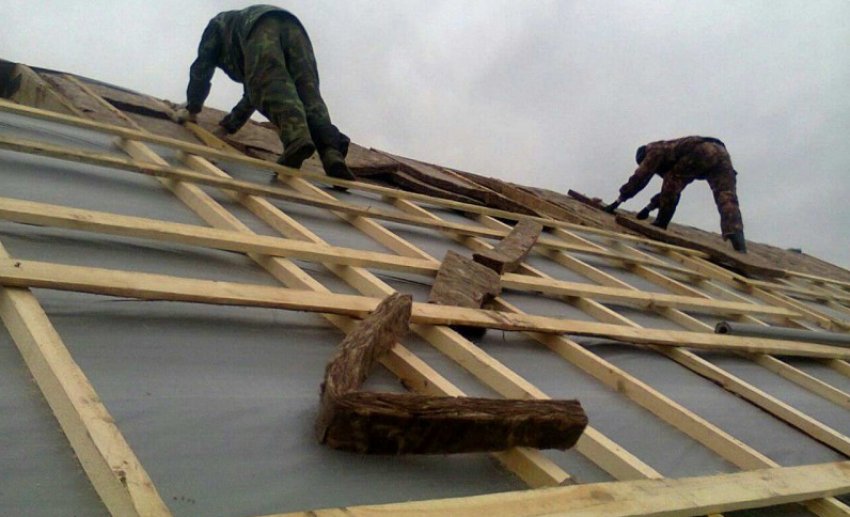
If possible, the plates are covered with any waterproofing material (special films or roofing felt), only after that the roof is sheathed with roofing material.
To do this, choose any of the existing options, while slate is considered the cheapest.
Important! The roof is fixed with an overlap of sheets and its other components of at least 15 cm, otherwise such a roof will definitely leak, and its repair will require additional investments.
Gender
Often the floor in the corral is made of concrete, at least 20 cm thick. Other materials are unsuitable for this, they do not allow you to create a holistic and at the same time reliable floor. The floor is poured with concrete mortar throughout the inside of the corral, while it is necessary to achieve a slight slope of about 4 °. At the lowest point, a small chute should be installed, along which it will be possible to remove animal secretions or other liquids in the future.
Doors, windows
Doors are one of the main elements of the corral, they are created large, at least 2 m wide. This is necessary so that 2 adult animals can be freely driven inside. Double-leaf gates made of metal, wood or plastic are best suited for this.

Windows are installed at a height of at least 140 cm from the base, they are made small, with a tilt-and-turn opening mechanism. This will help create an adjustable ventilation system not only for the entire structure, but also for the individual cell of each individual. The optimal window dimensions are 160 × 110 cm, however, depending on the conditions, they can be adjusted.
Homemaking
Before putting the pen into operation, it will be necessary to improve it with high quality, this allows you to make keeping the sheep as comfortable as possible for the animals themselves, as well as for humans. To do this, all kinds of additional buildings and other elements are placed in the structure, such as a feeder, stalls and a nursery.
Feeders, drinkers, stalls and nurseries
For a comfortable stay of animals, the common area should be divided into several parts, while providing for separate keeping of lambs, sheep and young animals. For adults, common or individual stalls with small partitions are erected.
They are equipped so that each individual has plenty of free space, so their width should be at least 70 cm. The nursery is created in the form of small elongated troughs, up to 50 cm wide.
Parameters of common feeders:
Characteristics of the animal
Minimum dimensions for 1 individual, cm (H×D×W)
Lambs up to 45 days old 20×15×15 Young animals up to 1 year old 30×30×30 Females 40×30×40 Males 40×30×50
Each pen is equipped with individual or common feeders, divided into containers for loose and wet food, as well as for hay. For loose and wet fodder, deep elongated troughs are used, for hay – a special jar-shaped feeder with through holes.
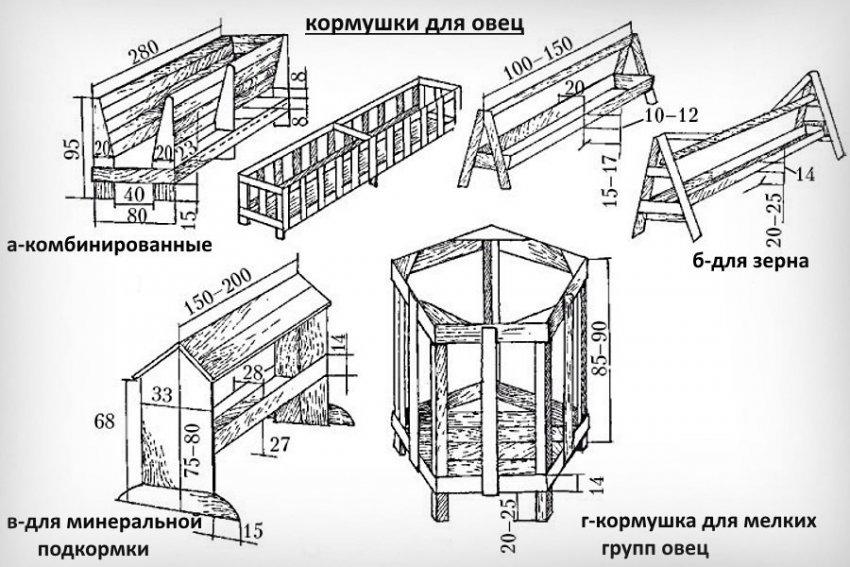
In addition, a drinking bowl should be installed not far from the feeders. It can be any utensils made of safe metals or plastic, each such container must be at least 6–10 liters in volume. The floor in the paddock must be covered with a bed of hay or straw. In winter, its layer should be at least 20 cm; in the warm season, the thickness can be reduced to 10 cm.
Walking paddock
The exit from the paddock must necessarily be directed to the common area for walking. It is an open area with a leveled surface. Since the wool of sheep and rams is quite dense and thick, animals can be let out for a walk throughout the year, with the exception of short periods of minimum winter temperatures. The dimensions of the walking yard should be maximum, while for one adult animal there should be a space of at least 2 m².
Canopy
If the livestock has more than 50 heads, it is imperative to make a small protective canopy on the territory of the walking yard, providing each animal with an area of at least 0,8 m². To do this, 4 racks made of wood or metal with a diameter of at least 10 cm are buried in the soil.

In the upper part they are tied up with horizontal bars, after which a shed or gable roof is installed. In the case of excessively large livestock, the canopy is also made large, in which case the number of carrier racks is increased. They are dug in at a distance of no more than 4 m.
Fence Installation Instructions
After the pen is completely built, you can begin to install a protective fence. One side of it should border on the walls of the covered paddock and fit snugly against it, the other should be installed on the edge of the walking yard.
According to the markings applied earlier, the supporting racks should be installed. They can be metal pipes or wooden beams, dug to a depth of at least 40 cm, with a distance of 4–6 m. They do this so that the rack must be in place of each corner of the site.
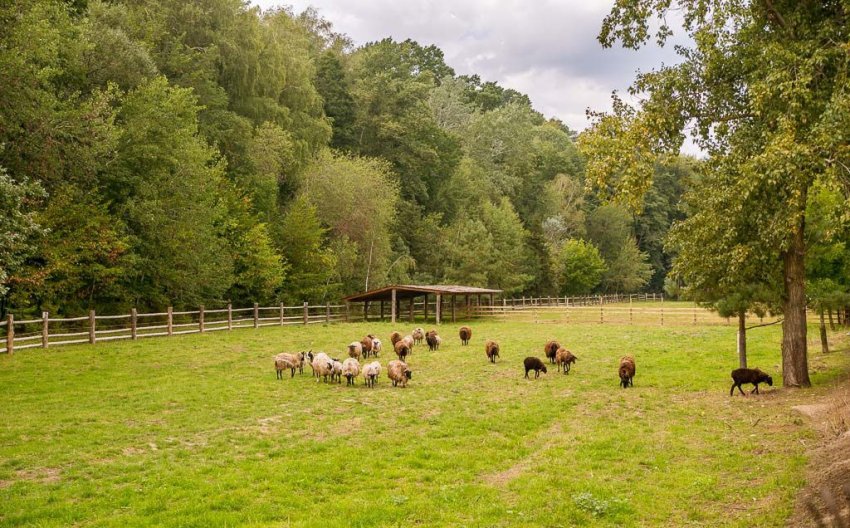
Next, horizontal crossbars should be fixed to the support at a distance of 15–20 cm from the ground and the top of the racks. At the end of the procedure, you should get a stable frame that will withstand any load. It should be sheathed, for this, boards, metal mesh, etc. must be fixed to the horizontal crossbars. They do this so that the outer skin turns into an integral structure.
Additional devices
To provide the sheep with the best microclimate, one cannot do without additional technical devices in the room. The most important of these are the heating system and ventilation. The ventilation system is installed at a height of about 35 cm above the floor or under the ceiling, it can be of a natural or artificial type. Wide-channel installations with a discharge pipe diameter of about 50 cm are best suited for this.
 Fresh air through the window 1 enters through the air channel 2 parallel to the ceiling 3 for the stall area 4. Then the cold fresh air entering the room descends vertically down into the side channel 5 manure storage 6. Here he is in contact with manure 7, displaces and removes harmful compounds from it, and as a result of interaction from the manure storage 6 the warm air mixture already heated in this way is removed through the central channel 8 vertically up. In this case, traction is created by opening and closing the damper 9 air channel 2 and exhaust windows 10made in the lantern 11.
Fresh air through the window 1 enters through the air channel 2 parallel to the ceiling 3 for the stall area 4. Then the cold fresh air entering the room descends vertically down into the side channel 5 manure storage 6. Here he is in contact with manure 7, displaces and removes harmful compounds from it, and as a result of interaction from the manure storage 6 the warm air mixture already heated in this way is removed through the central channel 8 vertically up. In this case, traction is created by opening and closing the damper 9 air channel 2 and exhaust windows 10made in the lantern 11.
Absolutely any heating system can be provided, the main thing is that in the most severe winters, with a load of no more than 80%, it provides an internal temperature of at least + 16 ° C. The most profitable and simplest for this can be called a complex of electrical installations of hot air injection. It allows you to instantly warm up the room and, if necessary, cool it just as quickly.
Did you know? The Dolan breed is considered to be the most expensive sheep in the world. The total number of these animals is about 1000 individuals, and the price for one animal reaches 2-2,5 million dollars.
Sheepfold is the first thing a rancher should think about before buying animals. The construction of this structure should be approached responsibly, since any mistakes can lead not only to instant wear of the structures, but also endanger the health of the sheep. This can negatively affect the profitability of livestock production and worsen the health of livestock.
